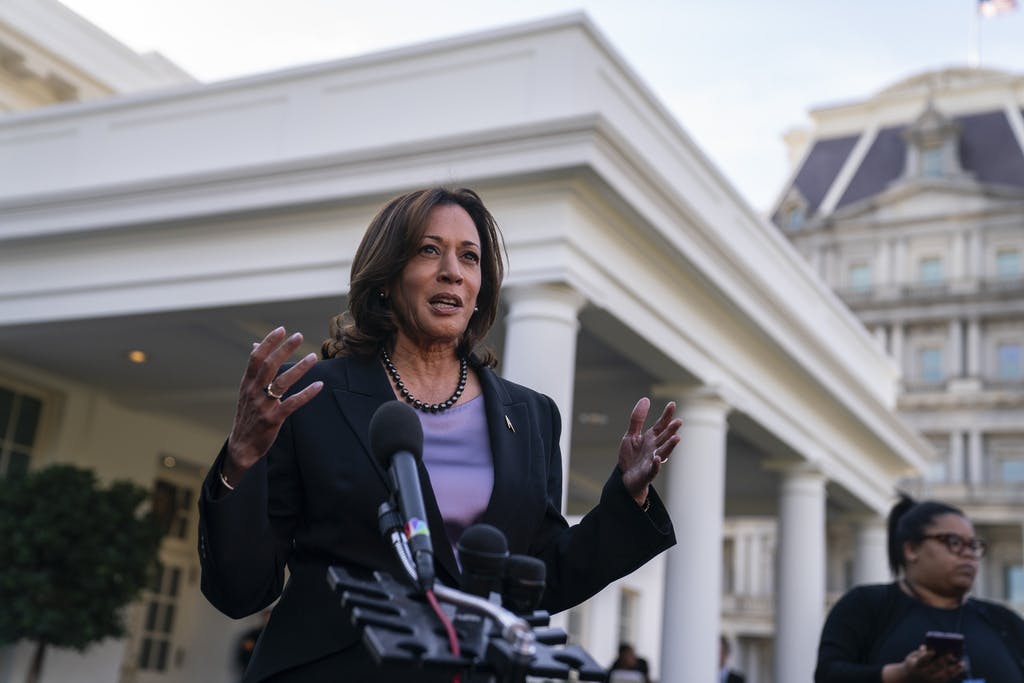Israeli Offensive Shifts to Southern Gaza, as Combat Ramps Up Following Cease-fire Expiration
Vice President Harris insists that America will not permit an ongoing siege of the territory.

KHAN YOUNIS, Gaza Strip — Israel pounded enemy targets in the crowded southern half of the Gaza Strip on Saturday and ordered more neighborhoods designated for attack to evacuate, driving up the death toll even as America and others urged it to do more to protect Gaza civilians.
At least 200 Palestinian Arabs have been killed since the fighting resumed Friday morning following a weeklong truce with the territory’s ruling militant group Hamas, according to the Hamas-controlled Health Ministry in Gaza.
Separately, the ministry — meaning Hamas — announced that the overall death toll in Gaza since the October 7 start of the war surpassed 15,200, a sharp jump from the previous count of more than 13,300. Hamas had stopped issuing daily updates of the overall toll on November 11, following war-related disruptions of connectivity and hospital operations.
The Hamas ministry does not differentiate between civilians and combatants, but it said Saturday that 70 percent of the dead were women and children. It said more than 40,000 people were wounded over the past two months. With the collapse of the temporary truce, Israel had been urged America, its closest ally, to do more to protect Palestinian civilians.
It was not clear if Israel’s military would heed appeals made Friday by Secretary of State Blinken for more surgical strikes as it shifts its focus to southern Gaza. President Macron told reporters at the climate conference in Dubai on Saturday that while he acknowledges Israel’s right to defend itself, “there is no right to attack civilians.”
The Israeli military said Saturday that it hit more than 400 Hamas targets across Gaza over the past day, using airstrikes and shelling from tanks and navy gunships. This included more than 50 strikes in the city of Khan Younis and surrounding areas in the southern half of Gaza.
Several houses and buildings were hit. At least nine people, including three children, were killed in a strike on a house at the city of Deir al-Balah in the south, according to the hospital where the bodies were taken. The hospital also received seven bodies of others killed in overnight airstrikes, including two children.
Meanwhile, Palestinian Arab terrorist groups in Gaza said they fired a barrage of rockets on southern Israel. Sirens were heard in communities near the Gaza Strip but there were no immediate reports of damage or injuries.
Along with the resumption of fighting, the military published an online map carving up the Gaza Strip into hundreds of numbered parcels and asked residents to familiarize themselves with the parcel number of their location ahead of evacuation warnings.
On Saturday, the military used the map for the first time, listing more than two dozen parcel numbers in areas around Gaza City in the north and east of Khan Younis. Separately, the military also dropped leaflets with evacuation orders over towns east of Khan Younis.
The maps and leaflets generated panic, fear, and confusion, especially in the crowded south. Unable to go back to northern Gaza or neighboring Egypt, Gazans’ only escape is to move around within 85-square-mile area.
The renewed hostilities have also heightened concerns for 136 hostages who, according to the Israeli military, are still held by Hamas and other militants after 105 were freed during the truce.
During the truce, Israel freed 240 Palestinians from its prisons. Most of those released from both sides were women and children.
Vice President Harris, who was in Dubai on Saturday for the climate conference, was expected to outline proposals with regional leaders to “put Palestinian voices at the center” of planning the next steps for the Gaza Strip after the conflict, according to the White House. President Biden’s administration has been arguing that there is a need for an eventual two-state solution, with Israel and a Palestinian state coexisting.
On the sidelines of the conference, Mme. Harris met with President Abdel Fattah Al-Sisi of Egypt. The vice president, her office said, reiterated that America will not permit the forced relocation of Palestinians from Gaza or the West Bank, an ongoing siege of the territory, or the redrawing of its borders. Mr. Blinken had previously talked publicly about these parameters.
